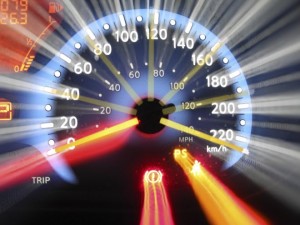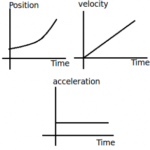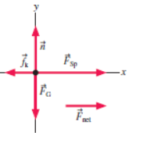The average acceleration (a) of any object over a given interval of time (t) can be calculated using the equation

This equation can be used to calculate the acceleration of the object whose motion is depicted by the velocity-time data table above. The velocity-time data in the table shows that the object has an acceleration of 10 m/s/s. The calculation is shown below.

 Acceleration values are expressed in units of velocity/time. Typical acceleration units include the following:
Acceleration values are expressed in units of velocity/time. Typical acceleration units include the following:
m/s/s
mi/hr/s
km/hr/s
m/s2
These units may seem a little awkward to a beginning physics student. Yet they are very reasonable units when you begin to consider the definition and equation for acceleration. The reason for the units becomes obvious upon examination of the acceleration equation.

Since acceleration is a velocity change over a time, the units on acceleration are velocity units divided by time units – thus (m/s)/s or (mi/hr)/s. The (m/s)/s unit can be mathematically simplified to m/s2.


